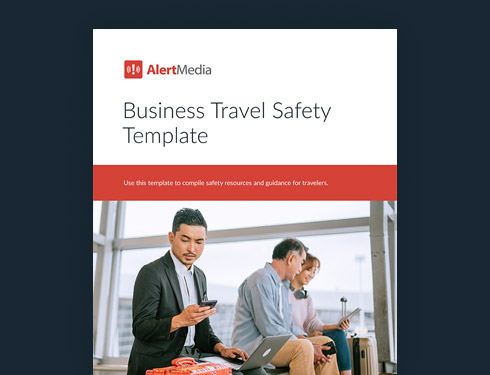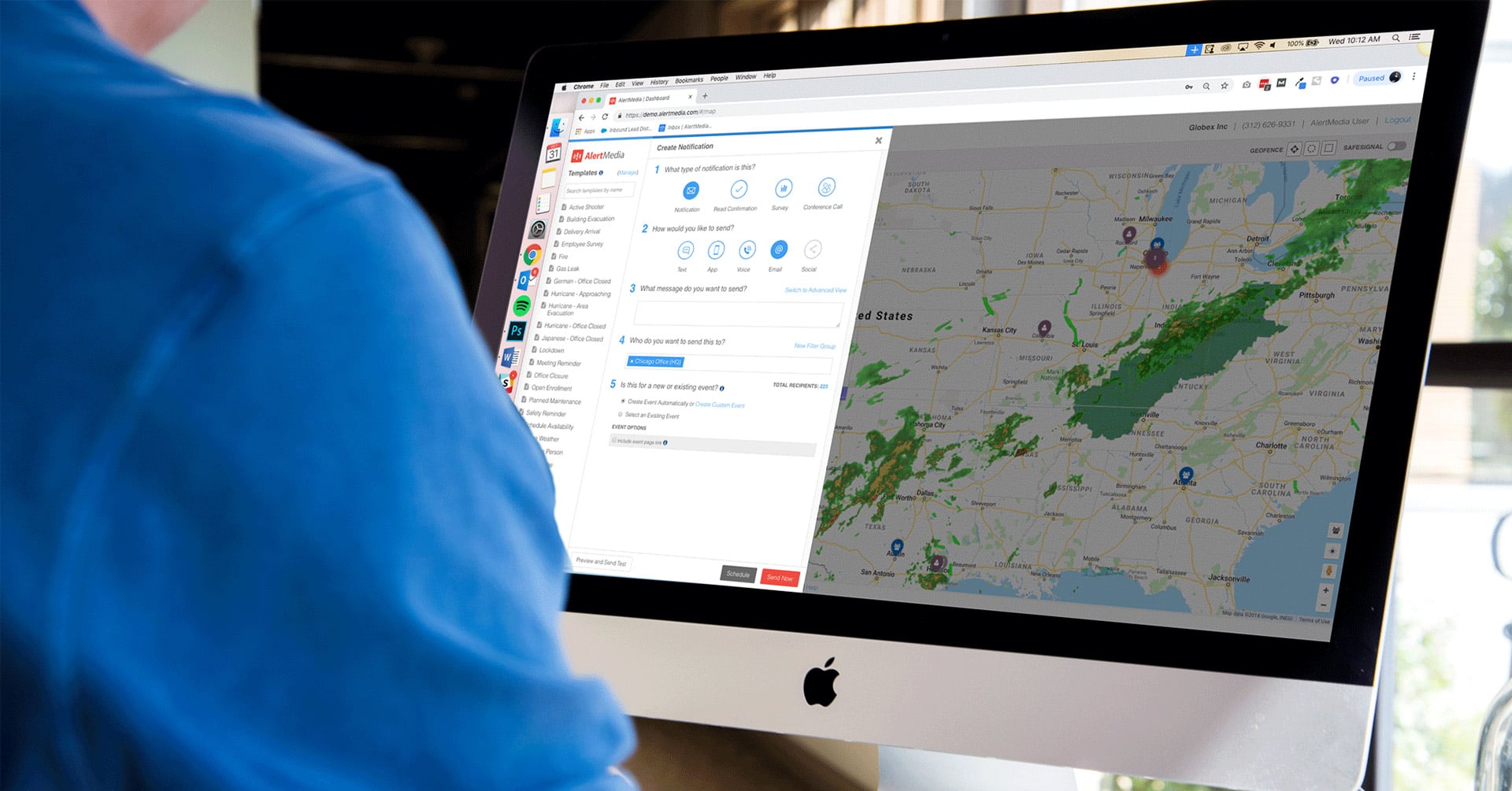
Meeting Your Duty of Care to Business Travelers: Guidelines and Tips
Traveling workers face unique and varied dangers worldwide. Here are the ways you can fulfill your duty of care and protect them.

Global business travel is back—but it’s more complex than ever. Today’s traveling employees face a broad spectrum of risks that extend far beyond the disruptions of the pandemic. Political unrest, natural disasters, civil protests, cybercrime, transportation strikes, and localized violence are just a few of the evolving threats organizations must now monitor in real time.
These dynamic and often unpredictable challenges can leave business travelers stranded, cut off from communication, or vulnerable in unfamiliar environments. For employers, that creates both a logistical challenge and a critical legal obligation of your duty of care: protecting your employees’ well-being, ensuring every employee can travel safely and return home without incident.
To meet the legal requirements and moral obligations, organizations must adopt a more proactive, flexible approach to travel safety. That means creating a safety-focused corporate travel policy, anticipating risks, leveraging real-time risk intelligence, and maintaining continuous communication with employees on the move. As the risk landscape grows more complex, effective planning and rapid response are essential to keeping your people safe—and your business moving forward.
Download Our Business Travel Safety Template
Why Are Business Travel Care Measures Critical?

What began as a wake-up call during the pandemic has become a far-reaching challenge, as modern travel risks now span environmental, political, and operational domains. Circumstances, including severe weather, travel bookings disruptions or cancellations, civil or political unrest, terrorism, health threats, criminal detention, and cyberattacks, emerge unpredictably in places around the world. While your employees need to practice situational awareness and anticipate threats in their immediate surroundings, they can do only so much on their own and need support to stay safe.
When traveling, workers are already isolated from their usual support networks: their coworkers, supervisors, HR department, IT team, and others. Additionally, they are often unfamiliar with the local environment, resources, and threat landscape. Even more than at home and in their familiar workplaces, traveling employees need to depend on the support of safety leaders, so it’s critical that you build effective and reliable communication pathways for your duty of care policy and travel safety and emergency response plans.
What Is Duty of Care?
Duty of care is an employer’s responsibility to safeguard against injury or other harm to employees while on the job or performing ancillary tasks like commuting or traveling. This term, duty of care, originally came to us from the legal world, where employee injury often means a regulatory audit and possible penalties. Duty of care as a proactive approach has become popular among business and safety leaders because it makes good legal sense and contributes to an organization’s safety culture. Beyond that, it’s the morally right way to run a business.
The United States Occupational Safety and Health Administration, or OSHA, has a similar requirement known as the General Duty Clause: “Each employer shall furnish to each of [its] employees employment and a place of employment which are free from recognized hazards that are causing or are likely to cause death or serious physical harm…”
In short, you have to protect the people working for you and those exposed to your work. It is the morally sound thing to do, and it’s one of the best ways to increase employee morale, loyalty, and peace of mind. According to our State of Employee Safety Report, 82% of workers believe it’s their employer’s job to protect them while on the clock, including when traveling for company business.
What Is Your Duty of Care in Travel Management?
You can satisfy your business travel duty of care by fulfilling a few primary responsibilities and preparing for certain eventualities. All of these tips can be integrated into your existing risk management strategy and duty of care program to seamlessly improve the safety and security of your overall business travel program.
Conduct a risk assessment
Before you can do anything to keep your distributed employees safe, you need to perform a threat assessment that narrows in on employee travel. This process will help you identify potential threats, both likely and unlikely, and predict their effects on your travelers. As part of your business threat assessment, quantify every threat in terms of its impact and likelihood. This analysis will inform your travel risk management plan.
Because each business trip is unique, risk assessments need to be unique as well. Performing an individual risk assessment for each traveler might not be necessary. If one or more of your employees frequently make the same trip, like a foreign office in a safe, stable locale, you might need only one assessment to determine the necessary business travel care measures. In this case, employees might all take the same flight, stay at the same hotel, and follow the same schedule, making potential risks predictable. You will need to revise and update the assessment, but it might not need much personalization for each traveler.
However, if you plan on sending employees to places your organization does not go to often or places recognized as high-risk, you’ll need to draft a new risk assessment. In any case, you’ll complete this careful assessment before making a trip. Once you’ve pinpointed all potential dangers, you can plan to prevent or react to each of them.
Make a plan

Now that you have a view of the threat landscape for an upcoming business trip, you can develop your travel safety policy. Be sure to include all relevant stakeholders—from HR and legal to operations and IT—when developing your travel risk management policies. This document dictates what the company and its traveling employees should do to account for the risks you identified in the previous step. This “care plan” will include ways to avoid threats entirely and plans to react if a hazard does unfold.
For high-impact threats, focus on preventative steps you can take. These threats include security risks: targeted violence, contracting dangerous diseases while abroad, massive cybersecurity breaches in key sectors like hospitality and air travel, and being detained by foreign police. Some steps you can take ahead of time are promoting pre-travel vaccinations, documenting emergency contact information, and creating pre-trip cybersecurity trainings. You need to develop an emergency response plan in case one of these threats impacts your business. However, your focus should be on planning with the foresight to avoid them entirely.
For high-likelihood threats, you’ll likely take an alternative approach. When it comes to things like extreme weather, delayed flights, and jet lag, with employee travel, these things often come with the territory. While there is little you can do to prevent these risks, your travel care program should focus on preparing to mitigate harm or inconvenience. Partnering with a travel management company (TMC) can also streamline logistics, from itinerary updates to real-time traveler tracking.
Monitor emerging threats
No matter how carefully you craft your plan, your travel risk management program doesn’t stop there because unforeseen complications are to be expected. Some things happen without enough advanced warning to prepare effectively. There are, however, things you can do to keep track of these developments.
The fastest and most comprehensive way to stay ahead of all the developing threats worldwide is to use a threat intelligence system. These advanced services pull information from thousands of sources—from local news to police to social media—and trained intelligence experts filter out everything but the most important alerts, so you can focus on keeping everyone safe and informed. When you have direct access to analysts, you can reach out for more details about the emerging threats impacting your traveling employees.

Another way technology can enhance your threat monitoring capabilities is with location data from your employees, which can be used to pinpoint proximal threats. This feature can help improve your threat monitoring capabilities even for your non-traveling employees, but it’s especially useful when they are on the go. Since travelers move around frequently, having their location data integrated with your threat data will make you more likely to spot events that might harm your people or affect their plans.
Stay in touch
Simple communication between the traveler and HQ also supports duty of care in business travel. When you notice a new threat, you need to make the traveler aware of it so they can take action to keep themselves safe. Using a threat intelligence program that integrates with your mass notification system, you can automate alerts and updates to travelers in real time, increasing the odds of a positive safety outcome.
Employees also need a way of responding to those alerts with their own information or raising the alarm of dangers they’ve noticed themselves. Your mass notification system should be able to send messages in both directions, from company travel management and the travelers themselves. Not only does increased communication support your duty of care obligations, but it also serves to reinforce your safety culture and prove to your employees that you’re heavily invested in their safety and health. This improves morale, boosts productivity and retention, and generally makes your company a better place to work.
What Are Common Travel Risks and Safety Strategies?
The specific risks your traveling employees may face will vary widely depending on the kind of business you do, where you travel, and other factors. An energy company that sends employees on international travel trips to oil fields in remote parts of Saudi Arabia has to prepare for mitigating risks far different from those a software company must prepare for with sales reps traveling domestically. It will also be important to consider employee health issues or personal risks when planning travel security measures.
Needless to say, you must create your own business travel plans and tailor them for your travel process, your travelers, their tasks, and their destinations. We’ve gathered some examples to give you an idea of what these measures might look like.
Natural disasters
Disasters like earthquakes, hurricanes, tsunamis, wildfires, and landslides are incredibly powerful, destructive forces that wreak havoc around the world every year. However, they tend to occur semi-predictably. That’s not to say that, for example, earthquakes in California can be predicted down to the minute, but they are expected to happen with some regularity, so residents and buildings there are more likely to be prepared for such an event. The same should be true for travel.
Strategy: Your plans should anticipate likely natural disasters in the area your employees will visit and follow best practices to avoid their impacts or to minimize harm to your people.
Targeted violence
While it might sound far-fetched, murder is the second most common cause of injury death to American travelers behind road accidents. Targeted violence involving travelers is often random and unpredictable, but much like natural disasters, these incidents tend to happen more frequently in some places.
Strategy: When a traveling employee is potentially at risk of targeted violence, your threat assessment and other preparatory research must be thorough. By identifying high-risk areas, you can alter your travel plans to avoid them. If that is not possible, and traveling is necessary, consider private close protection (AKA bodyguards) to guard your people.
Cyberattack
If you’ve ever tried to stream a movie while traveling, you know the headache of finding a speedy, open, secure internet connection in an unfamiliar place. Nobody is more aware of this vulnerable connectivity than cyber criminals.
The security of public wifi access points in airports, hotels, and restaurants can be a guessing game. However, guidelines exist to help your people maintain a safe connection to their vital internet-based resources.
Strategy: First of all, loop in your IT department when making your travel plans. Since they’re familiar with the configuration of your company’s internal network and devices, they’ll be able to offer tailored advice. These tips can guide your efforts:
- Access sensitive information only on secured networks. WPA-2 is a popular and usually sufficient encryption protocol, whereas WEP should be avoided. But again, your IT team would know best in this case.
- Use a virtual private network (VPN) to secure traffic from interception.
- Keep everything, especially operating systems and antivirus software, up to date.
- Diligently practice cybersecurity recommendations: keep passwords distinct and hard to guess, be wary of phishing scams, and turn off unnecessary services like location data and Bluetooth.
Complete Care
When employees travel, your business extends to where they go. If you’re fulfilling your duty of care for the day-to-day workers in static locations, you’re already familiar with the considerations you need to make to keep them safe and healthy. Apply similar thinking to the challenges and needs of your employees on the go.
If you’re looking for ways to make the threat identification and communication side easier so you can focus on your people, let us know and we’ll show you how AlertMedia can help.
FAQ
- What is duty of care in business travel? Duty of care in business travel refers to an employer’s legal and ethical obligation to ensure the safety and well-being of employees while they are traveling for work.
- Why are duty of care measures important for traveling employees? Traveling employees often face unfamiliar environments, increased isolation, and dynamic risks. Effective duty of care measures ensure their safety, improve morale, and help fulfill legal responsibilities.
- How can employers meet their travel duty of care obligations? Employers can meet their duty of care by conducting thorough risk assessments, creating a detailed travel safety plan, using threat intelligence systems, and maintaining open communication with traveling employees.
- What are common risks business travelers face? Common risks include natural disasters, cyberattacks, targeted violence, political unrest, and logistical disruptions like flight delays and transportation strikes.
- What tools can help monitor threats to traveling employees? Threat intelligence systems and location tracking tools help identify emerging risks and send real-time alerts to employees and safety leaders.
- How can communication support duty of care efforts? Maintaining two-way communication allows employers to send alerts, receive updates, and ensure employees are aware of and can respond to threats, reinforcing safety culture and preparedness.
Download Our Business Travel Safety Template
More Articles You May Be Interested In
-
 Safety and Security, Emergency Management20 Business Travel Safety Tips and Guidelines for Employees
Safety and Security, Emergency Management20 Business Travel Safety Tips and Guidelines for Employees -
 Communications, Emergency ManagementUsing Location-Based Safety Alerts to Protect Employees Anywhere
Communications, Emergency ManagementUsing Location-Based Safety Alerts to Protect Employees Anywhere -
 Emergency Management, Safety and SecurityHow the ISO 31030 Framework Enhances Travel Safety and Business Resilience
Emergency Management, Safety and SecurityHow the ISO 31030 Framework Enhances Travel Safety and Business Resilience




